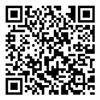Specific Solutions
Accident Insurance Contract Translation: Accuracy Behind Every Clause
— Provided by Airui Translation
In the insurance industry, an accident insurance contract is not merely a policy document—it is a legally binding agreement that defines liability, coverage scope, and claims procedures. In cross-border scenarios such as international underwriting, overseas travel, or foreign claims processing, precise bilingual translation of insurance contracts is vital to ensure enforceability and understanding.
As a trusted language service provider specializing in legal and insurance content, Airui Translation delivers professional, standardized, and legally accurate translations of accident insurance contracts for enterprises and individuals.
✅ What Does an Accident Insurance Contract Translation Include?
Typical documents requiring translation include:
Core accident insurance policy clauses and special conditions
Insured party declarations and authorization forms
Exclusions, claim procedures, and settlement conditions
Coverage limits, premium details, duration, and geographic scope
Bilingual policy certificates and endorsements
Claim application forms and supporting documentation
These documents contain highly structured language and industry-specific terms that demand translation precision and legal familiarity.
✅ Why Is Accuracy So Critical in Insurance Contract Translation?
Legal Rigor and Clause Sensitivity
Accident-related terms such as “bodily injury,” “disability assessment,” or “third-party liability” must be translated without deviation.Terminology Standardization
Phrases like accidental injury, benefit period, waiting time, and policyholder require consistent usage throughout the document.Jurisdictional Differences
Translations must align with legal interpretations in both source and target countries, especially for terms like “accident,” “negligence,” or “force majeure.”Use in Legal and Official Proceedings
Bilingual versions may be submitted to hospitals abroad, foreign courts, consulates, or arbitration bodies, and therefore must follow formal formats with certification.


















